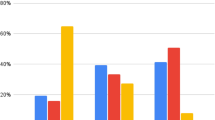Abstract
The multiple intelligences are familiar concepts to K-12 teachers and to many university professors, especially those in teacher education. The majority of educators have also heard of Daniel Goleman and the concept termed “emotional intelligence.” Emotional intelligence is rarely discussed as an important variable in the classroom, however, even though it has a profound influence on student learning. It should, therefore, inform decisions regarding the type and variety of instructional activities. Goleman’s (1995) research supports the claim that emotional intelligence, even more than IQ, is the most reliable predictor of success in school and in life. In this article, emotional intelligence is presented as the foundation for social skills—skills that students must possess to successfully work together collaboratively and in cooperative groups. Research conducted in U.S. classrooms indicates that the benefits of cooperative group learning depend on the quality of the interactions that occur. When the interactions are respectful and inclusive, more frequent use of small groups is associated with increases in academic and prosocial outcomes. When group interactions are disrespectful and inequitable, frequent use of groups is associated with reduced academic and prosocial outcomes. Linn, Lewis, Tsuchida, and Songer (2000) suggested that science education, as well as academic instruction of all kinds, should be studied in the larger context of students’ social and ethical development (i.e., responsibility, helpfulness, and the willingness and capacity to express disagreement respectfully); however, few reform efforts in the U.S. focus simultaneously on academic content, social development, and character development (Schaps, Watson, & Lewis, 1997).
Similar content being viewed by others
References
Brandt, R. S., & Perkins, D. (2000). The evolving science of learning. In R. S. Brandt (Ed.),Education in a new era (2000 ASCD Yearbook) (pp. 159–183). Alexandia, VA: Association for Supervision and Curriculum Development.
Ebert-May, D., Brewer, C., & Allred, S. (1997). Innovation in large lectures: Teaching for active learning.Bio Science, 47 (9), 601–607.
Gardner, H. (1993).Multiple intelligences: Theory into practice. New York: Basic Books.
Goleman, D. (1995).Emotional intelligence: Why it can matter more than IQ. New York: Bantam Books.
Herreid, C. F. (1998). Why isn’t cooperative learning used to teach science?BioScience, 48, 552–559.
Johnson, D. W., & Johnson, R. T. (1999).Learning together and alone (5th ed.). Needham Heights, MA: Allyn and Bacon.
Johnson, D. W., Johnson, R. T., & Holubec, E. J. (1993).Circles of learning: Cooperation in the classroom (4th ed.) Edina, MN: Interaction Book Co.
Johnson, D. W., Johnson, R. T., & Smith, K. A. (1998., July/August). Cooperative learning returns to college. What evidence is there that it works?Change, 17–35.
King, A. (1993). From sage on the stage to guide on the side.College Teaching, 4(1), 30–35.
Kohn, A. (1997). How not to teach values: A critical look at character education.Phi Delta Kappan, 78(6), 428–439
LeDoux, J. (1996).The emotional brain: The mysterios, underpinnings of emotional life. New York: Simon and Schuster.
Linn, M. C., Lewis, C., Tsuchida, I., & Songer, N. B. (2000). Beyond fourth-grade science: Why do U.S. and Japanese students diverge?.Educational Researcher, 29(3), 4–14.
National Commission on Excellence in Education. (1983).A nation at risk A report to the Nation and the Secretary of Education, U.S. Department of Education. Washington, DC: U.S. Government Printing Office.
Richardson, R. C. (1996a).Connecting with others: Lessons for teaching social and emotional competence (Grades K-2, Vol. 1). Champaign, IL: Research Press.
Richardson, R. C. (1996b).Connecting with others: Lessons for teaching social and emotional competence (Grades 3–5, Vol. 11). Champaign, IL: Research Press.
Rose, L., & Gallup, A. (1999). The 31st annual Phi Delta Kappa Gallup poll of the public’s attitudes toward the public schools.Phi Delta Kappan, 81(1), 41–56.
Salovey, P., Mayer, J. D., Goldman, S., Turvey, C., & Palfai, T. (1995). Emotional attention, clarity, and repair: Exploring emotional intelligence using Meta-Mood Scale. In J. W. Pennebaker (Ed.),Emotional disclosure and health. Washington, DC: American Psychological Association.
Schaps, E., Watson, M., & Lewis, C. (1997). A key condition for character development: Building a sense of community in school.Social Studies Review, 37(1), 85–90.
Smith, K. A. (1993). Cooperative learning and problem solving.Cooperative Learning and College Science Teaching Newsletter, 3(2), 10–12.
Author information
Authors and Affiliations
Corresponding author
Rights and permissions
About this article
Cite this article
Norman, K., Combs-Richardson, R. Emotional intelligence and social skills: Necessary components of hands-on learning in science classes. J Elem Sci Edu 13, 1–8 (2001). https://doi.org/10.1007/BF03176215
Accepted:
Issue Date:
DOI: https://doi.org/10.1007/BF03176215




